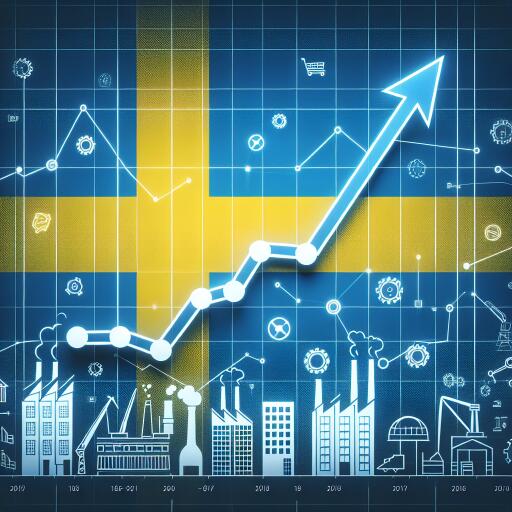Sweden Manufacturing Growth Strongest In 2 Years
In a significant development for the Swedish economy, May’s manufacturing activity witnessed its most robust expansion in two years, according to recent survey data from Swedbank and the logistics association SILF. This growth points towards a brighter future for the industrial sector in Sweden, marking a period of resilience and strength amidst global economic fluctuations.
The purchasing managers’ index (PMI) for the manufacturing sector, a key indicator of economic health in the manufacturing and industrial sectors, surged to 54.0 in May, up from 51.9 in April. The PMI operates on a scale where any figure above 50 denotes expansion in the manufacturing sector. This recent increase is a clear indication that Sweden’s manufacturing industry is on an upward trajectory, contributing positively to the overall economy.
Delving deeper into the components of the PMI, the primary factors driving this growth were found to be an uptick in order intake and production levels. These aspects had the most substantial positive impacts on the total PMI. Other contributors to the increase include improvements in delivery times and inventory purchases. On the flip side, employment within the manufacturing sector made a slightly negative contribution, hinting at potential challenges in workforce management and optimization within the sector.
Further insights from the survey revealed that the index for suppliers’ raw and input goods prices experienced a rise in May, reaching 55.4 from 53.4 in April. This increase suggests that there has been a resurgence of price pressure from suppliers, driven primarily by escalating global metal prices and a weakening of the Swedish krona. Such dynamics add layers of complexity to the manufacturing sector’s operating environment, as companies navigate these cost pressures while striving to maintain competitive edge and growth momentum.
This positive trend in Sweden’s manufacturing sector’s growth is not just a testament to the resilience and adaptability of the sector but also shines a light on the broader industrial economy’s potential for further strength and expansion. It reflects the optimistic sentiment and the proactive strategies that firms are likely adopting to navigate through challenges, seize opportunities, and drive growth in an ever-evolving economic landscape.
The rise in manufacturing activity in Sweden is a promising sign for the economy, suggesting a pathway towards sustained growth and development in the industrial sector. As businesses and policymakers digest this information, the focus will be on leveraging these insights to foster an environment conducive to continued expansion and prosperity in Sweden’s manufacturing sector.
